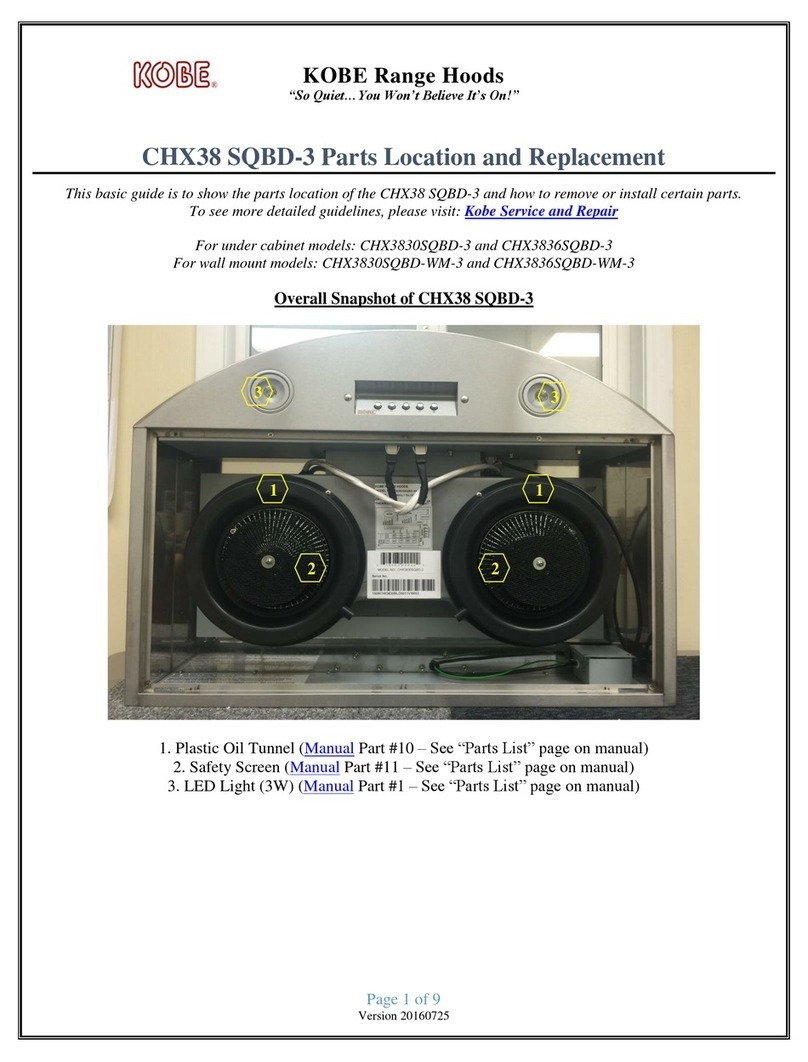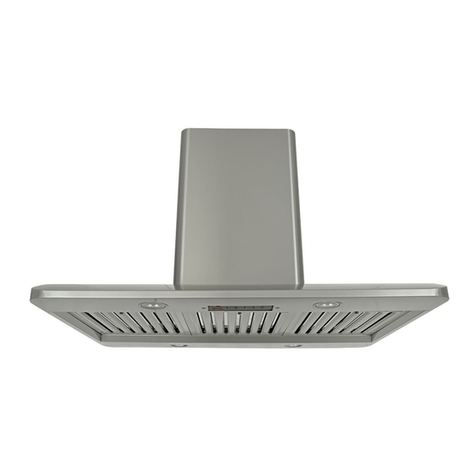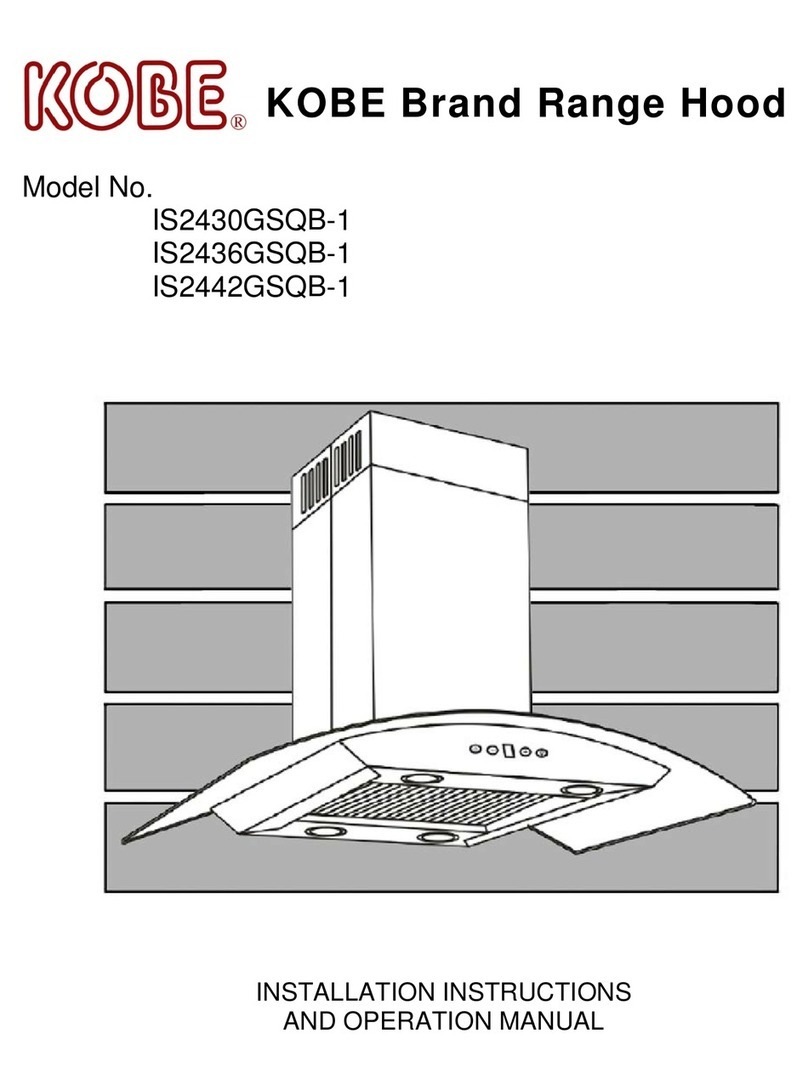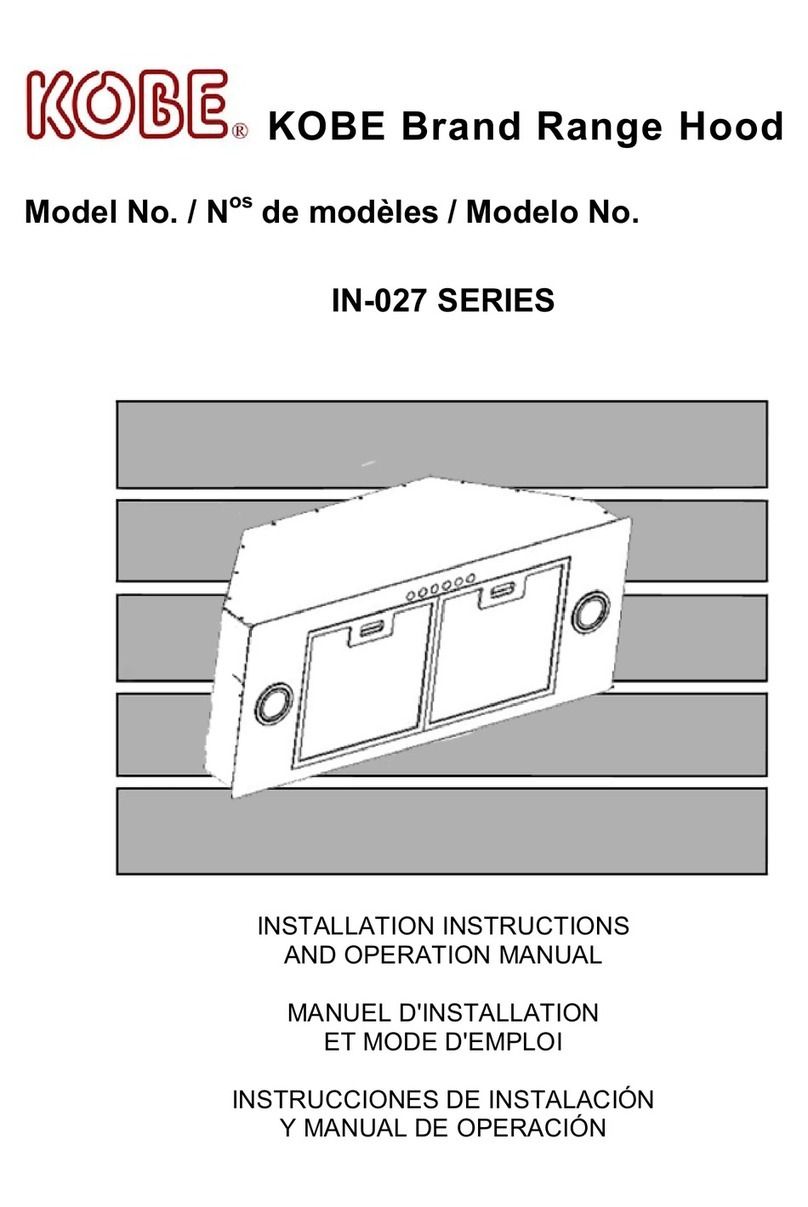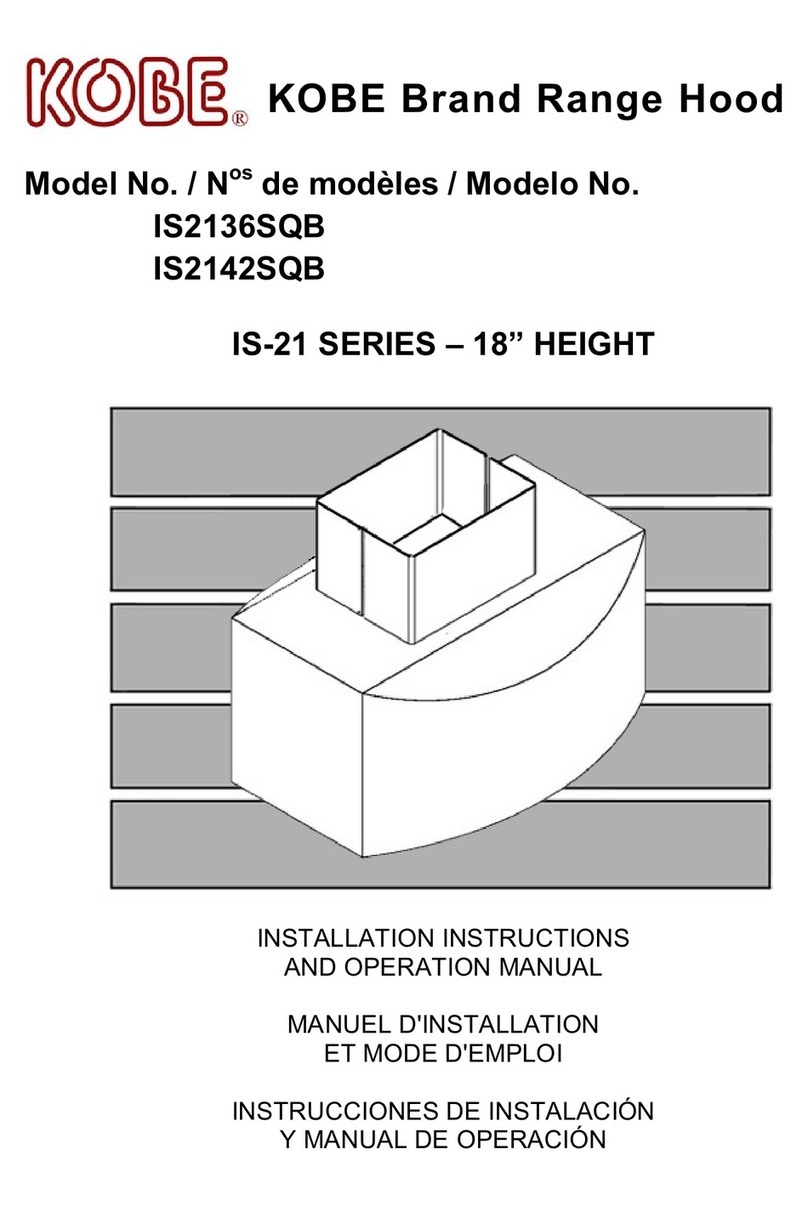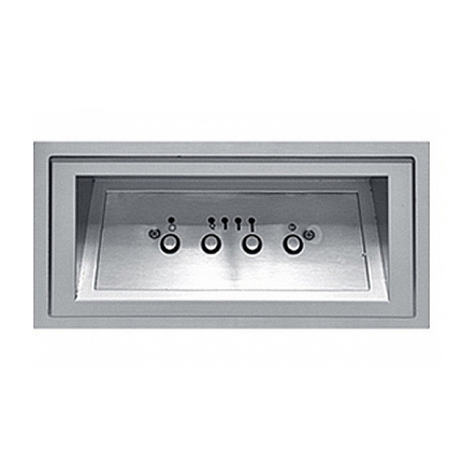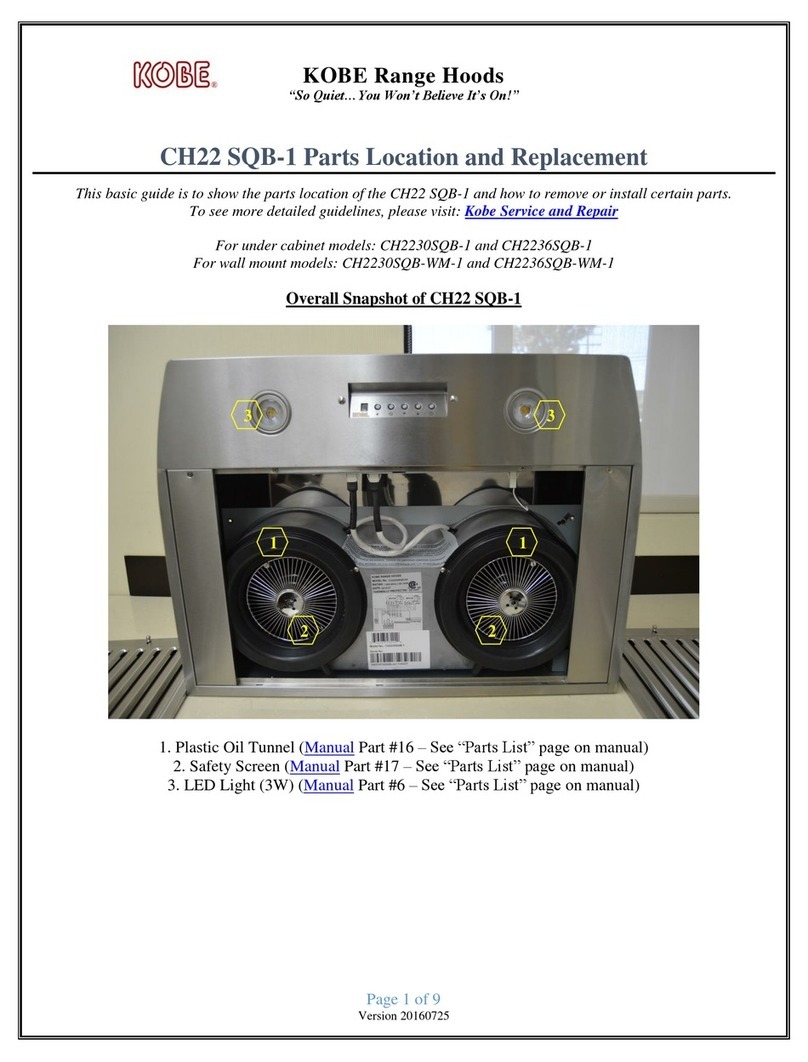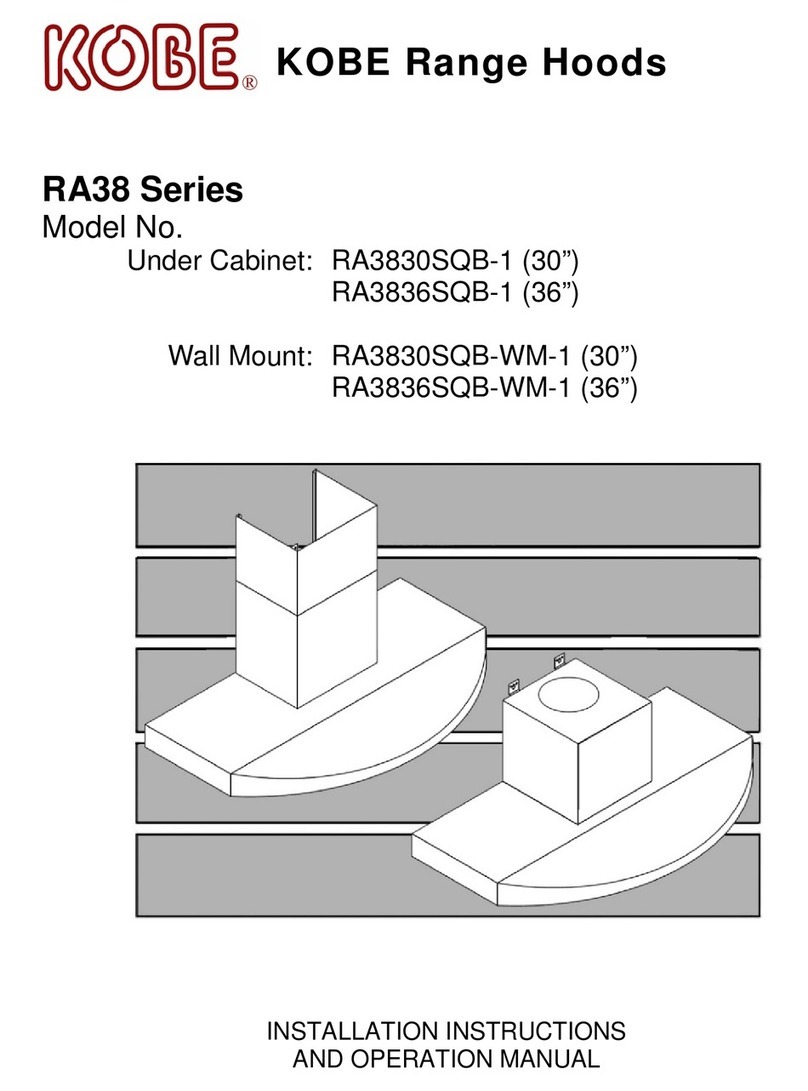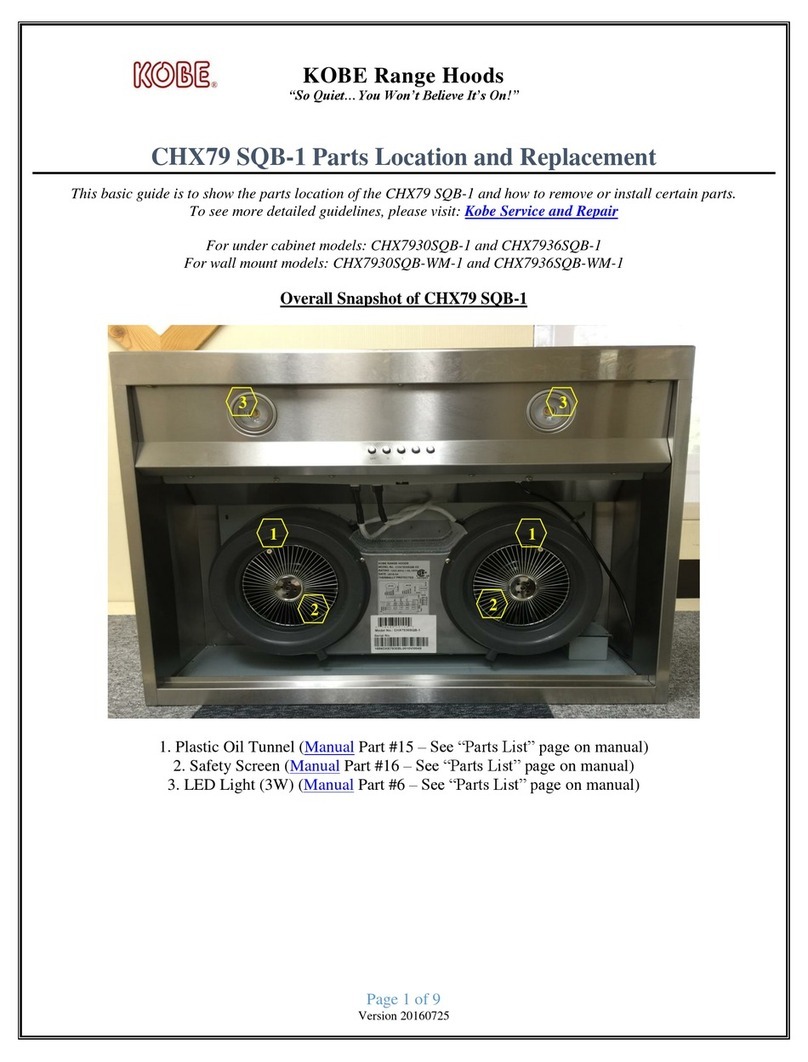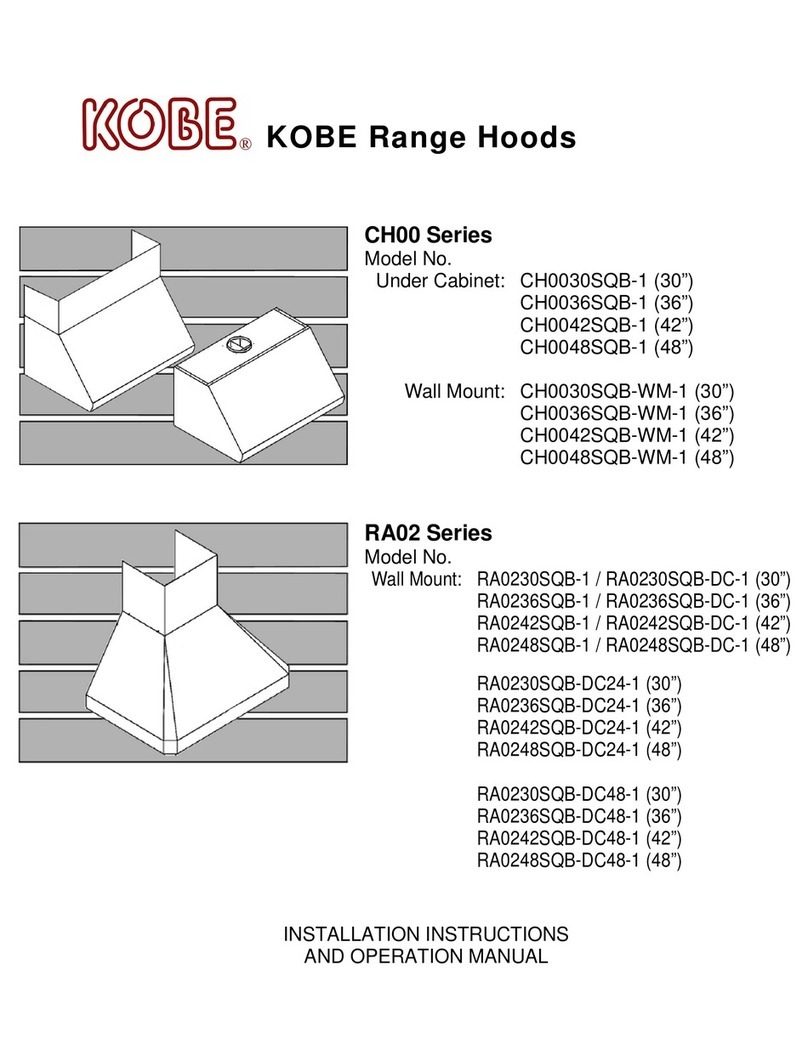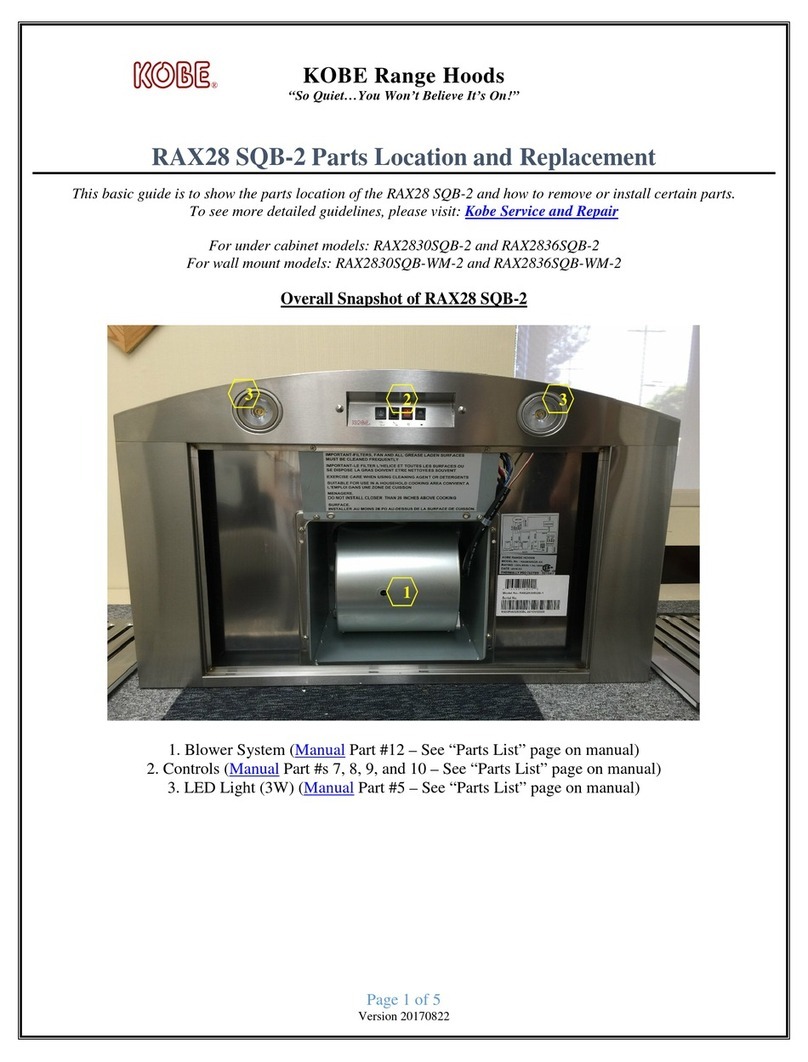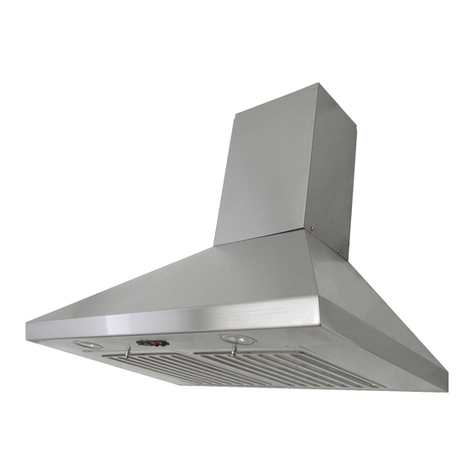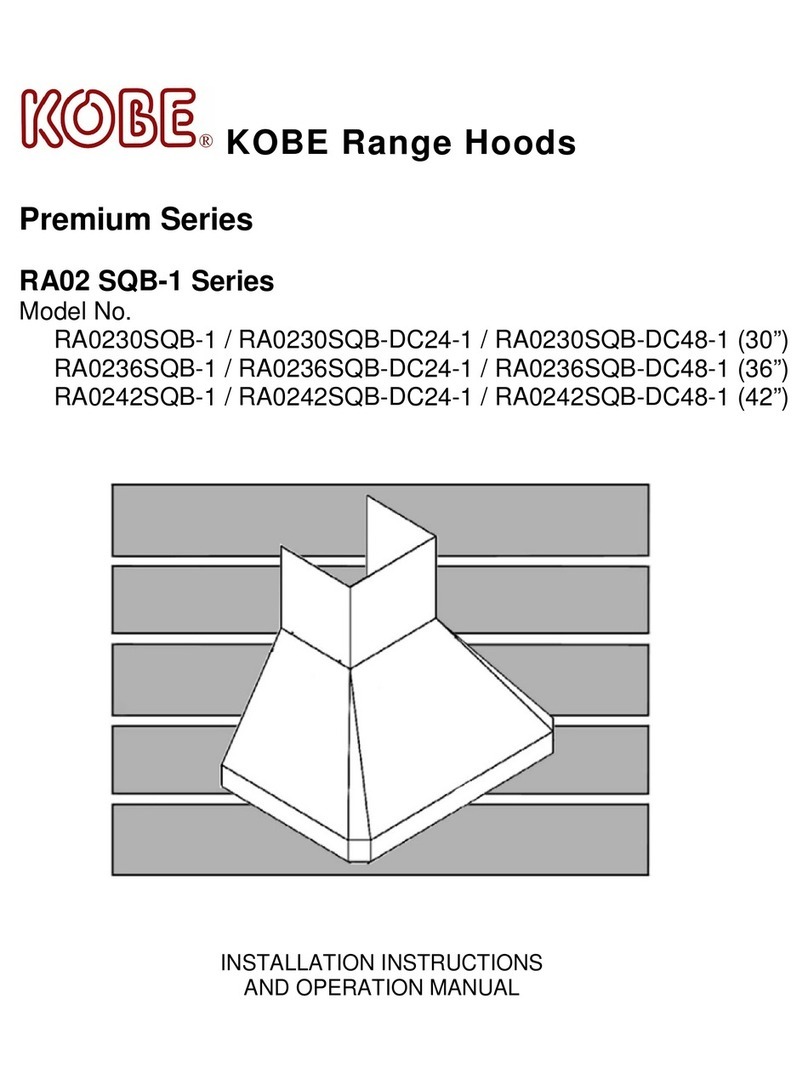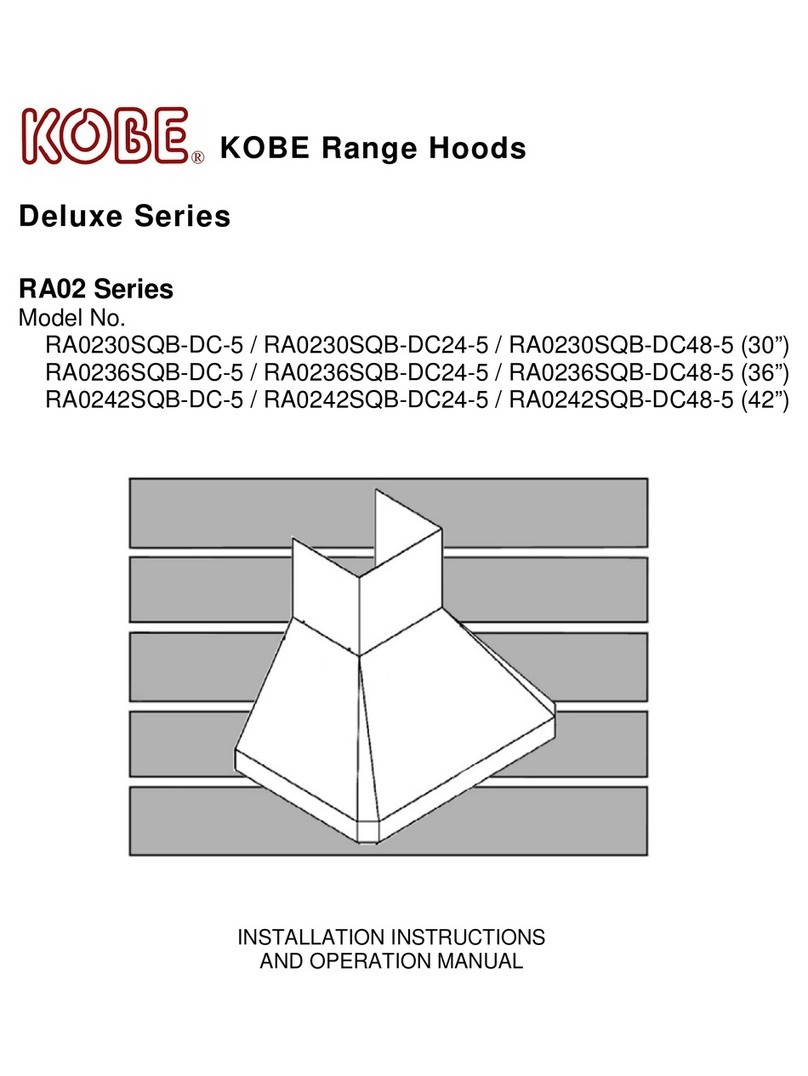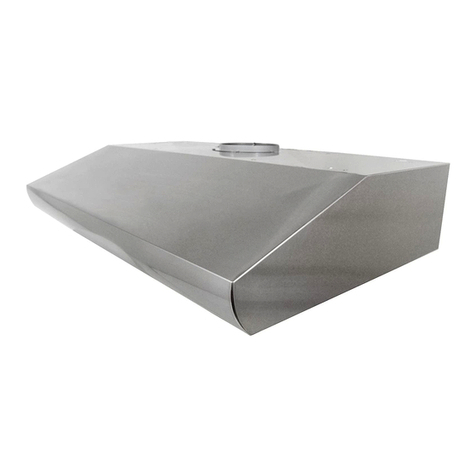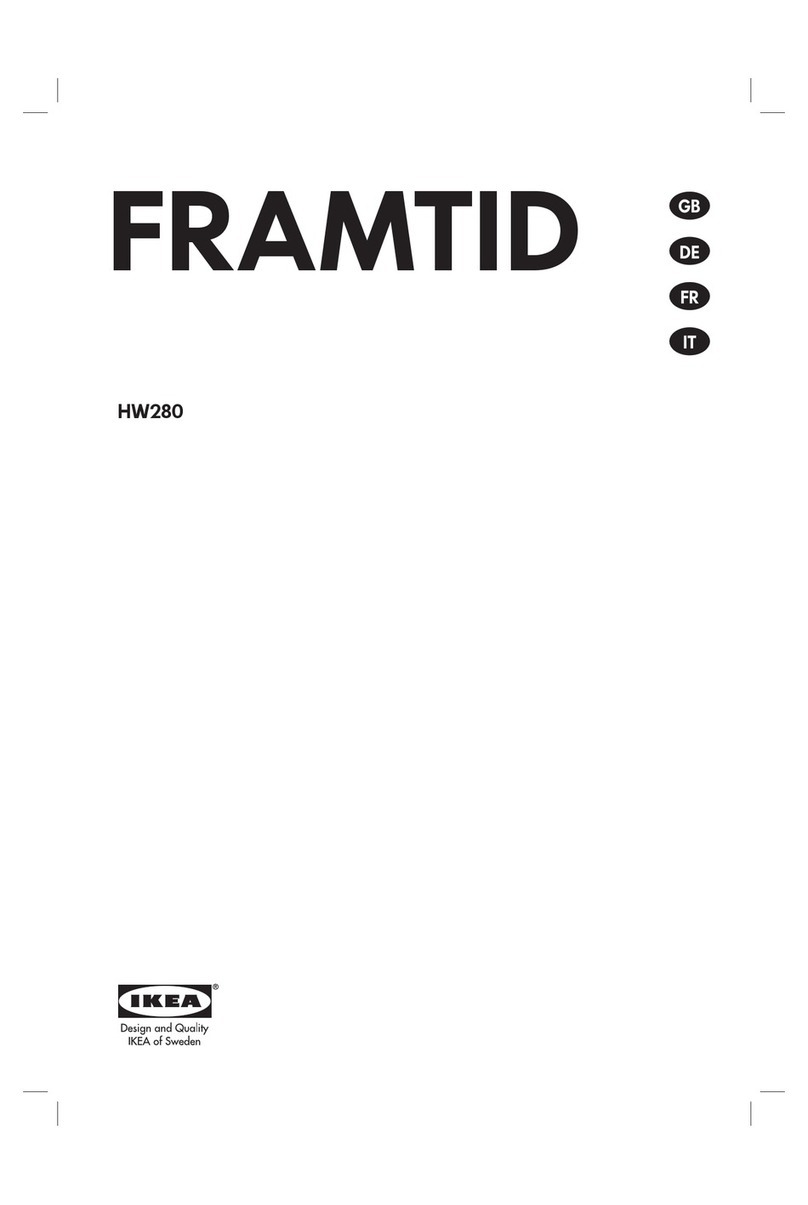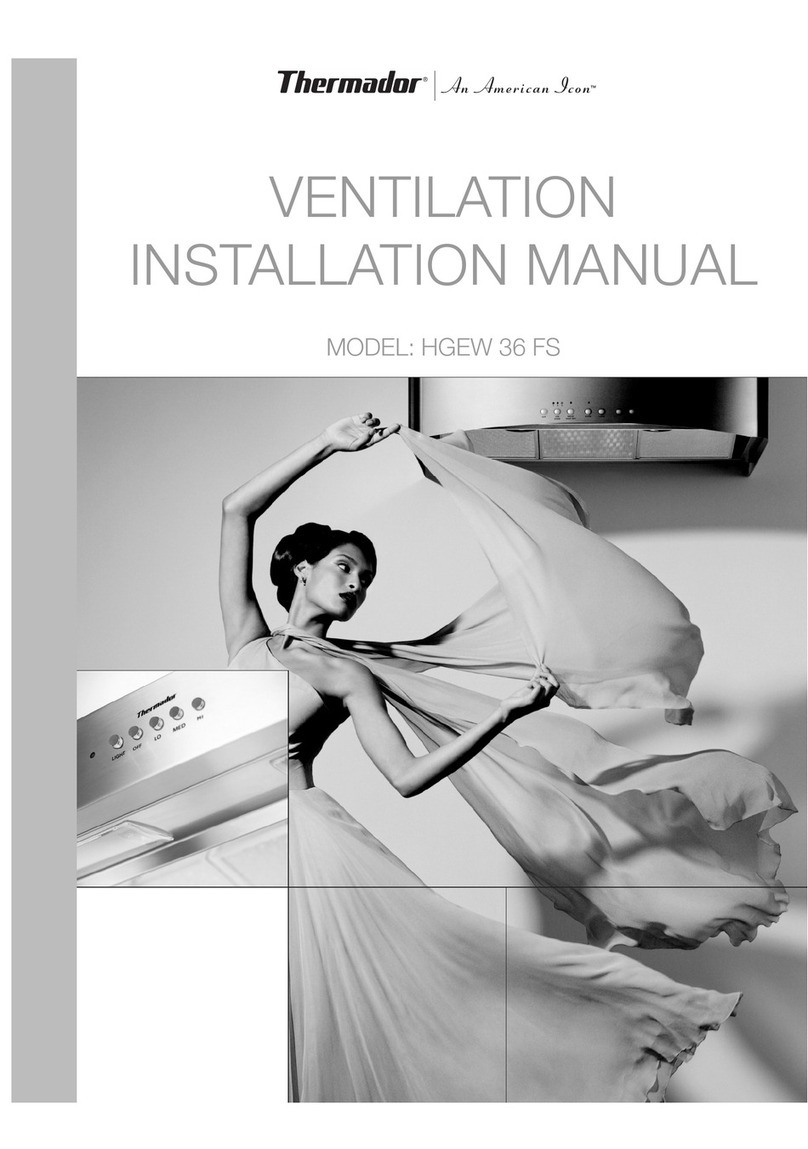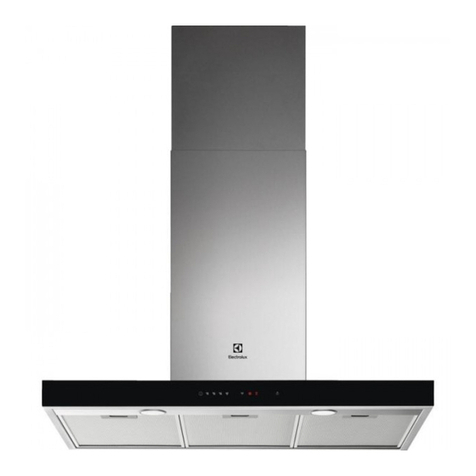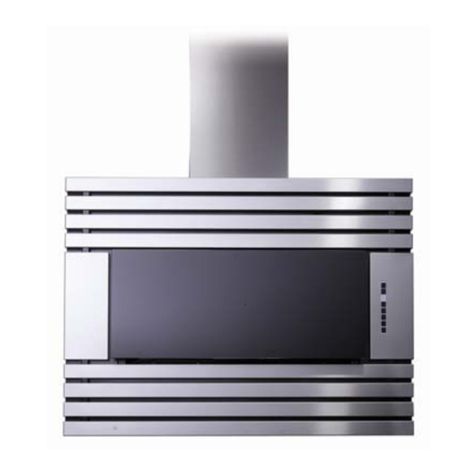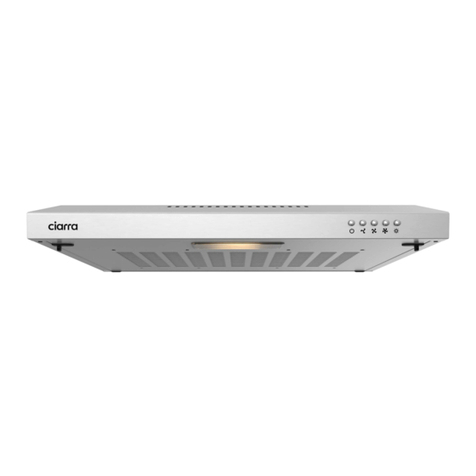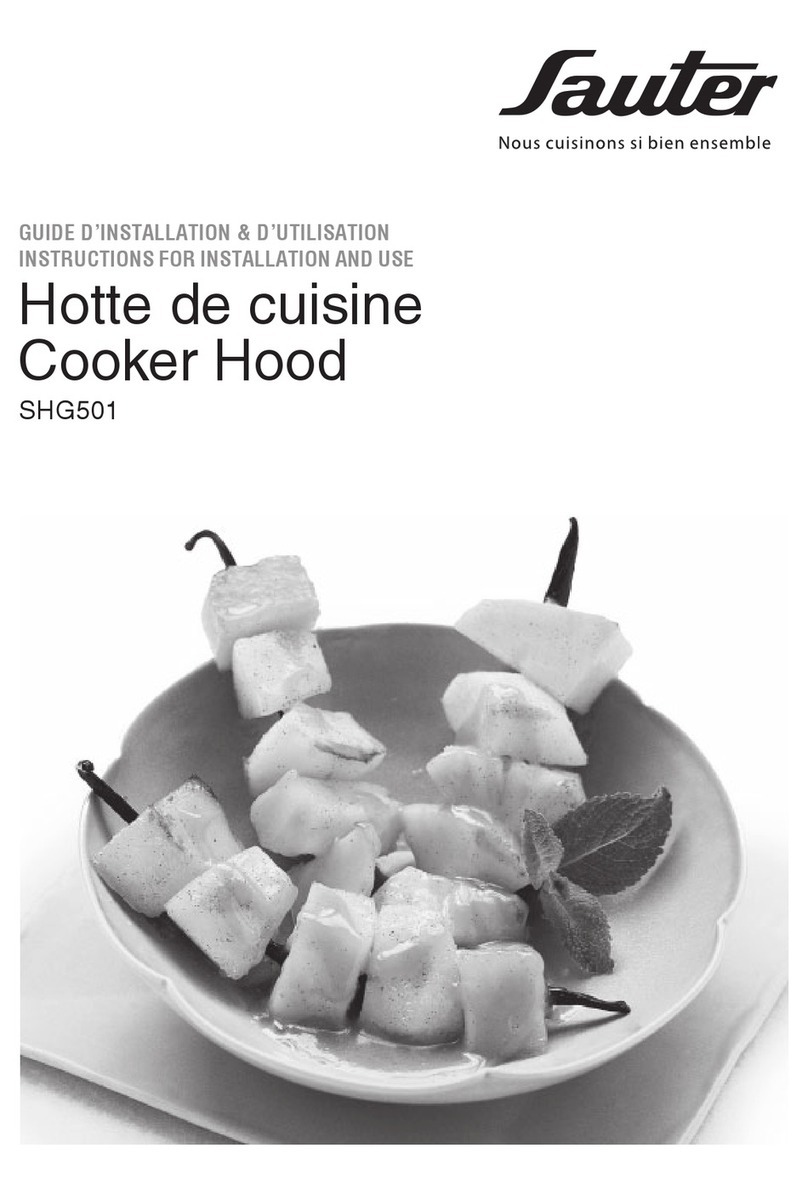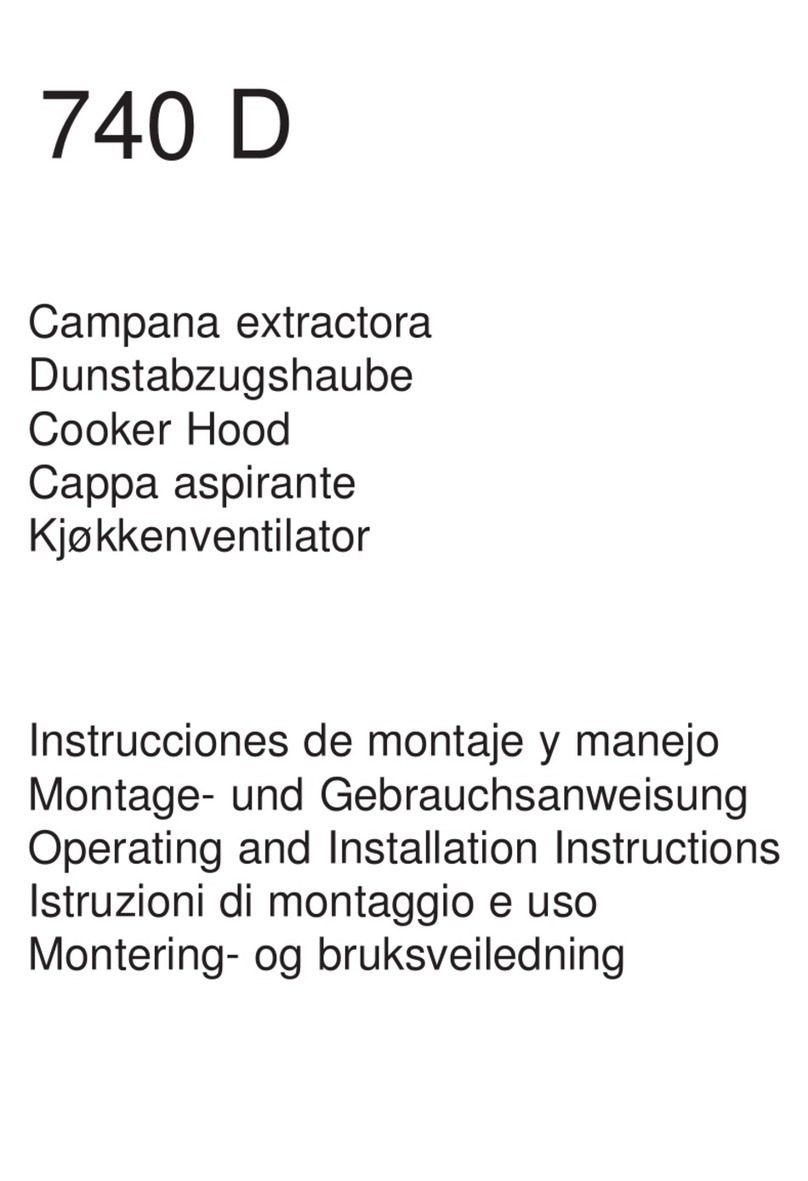
3
CAUTION: For general ventilating use only. Do not use to exhaust hazardous or
explosive materials and vapors.
CAUTION: To reduce risk of fire and to properly vent air, be sure to duct air
outside – do not vent exhaust air into spaces within walls ceilings, attics, crawl
spaces, or garages.
Sufficient air is needed for proper ventilation to prevent back drafting. Follow the
heating equipment manufacturer’s guideline and safety standards such as those
published by the National Fire Protection Association (NFPA), and the American
Society for Heating, Refrigeration and Air Conditioning Engineers (ASHRAE),
and local code authorities.
TO REDUCE THE RISK OF A RANGE TOP GREASE FIRE:
Keep fan, filters and grease laden surface clean.
Always turn hood ON when cooking.
Use high range setting on range only when necessary. Heat oil slowly on low to
medium setting.
Don’t leave range unattended when cooking.
Always use cookware and utensils appropriate for the type and amount of food
being prepared.
Clean ventilating fans frequently. Grease should not be allowed to accumulate on
fan or filter.
Always use cookware appropriate for the size of the surface element.
WHAT TO DO IN THE EVENT OF A RANGE TOP GREASE FIRE:*
SMOTHER FLAMES with a tight fitting lid, cookie sheet, or other metal tray, then
turn off the gas burner or electric element. BE CAREFUL TO PREVENT BURNS.
If the flames do not go out immediately, EVACUATE AND CALL THE FIRE
DEPARTMENT.
NEVER PICK UP A FLAMING PAN – you may be burned.
DO NOT USE WATER, including wet dishcloths or towels – violent steam
explosion will result.
Use an extinguisher ONLY if:
1. You know you have a Class ABC extinguisher and you already know how to
operate it.
2. The fire is small and contained in the area where it started.
3. The fire department is being called.
4. You can fight the fire with your back to an exit.
*Based on “Kitchen Fire Safety Tips” published by NFPA.
WARNING
WARNING
